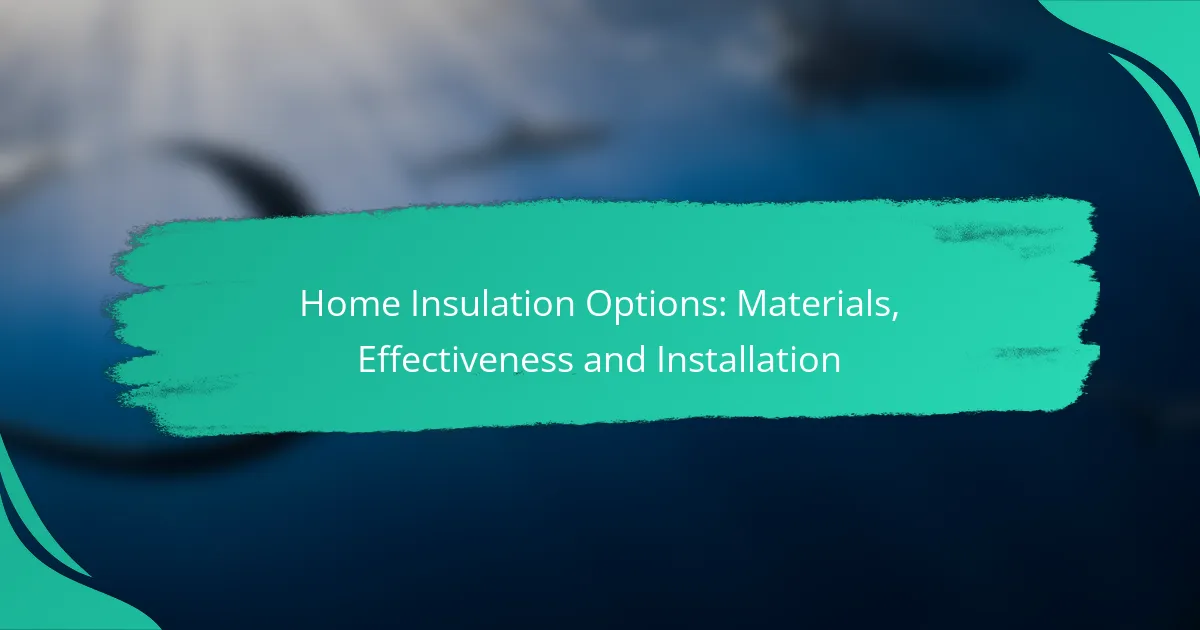Choosing the right home insulation is crucial for enhancing energy efficiency and comfort in your living space. With various materials available, such as fiberglass, foam board, and cellulose, each option presents distinct advantages and installation methods. Understanding these factors can help homeowners make informed decisions that lead to reduced energy costs and improved indoor temperatures.
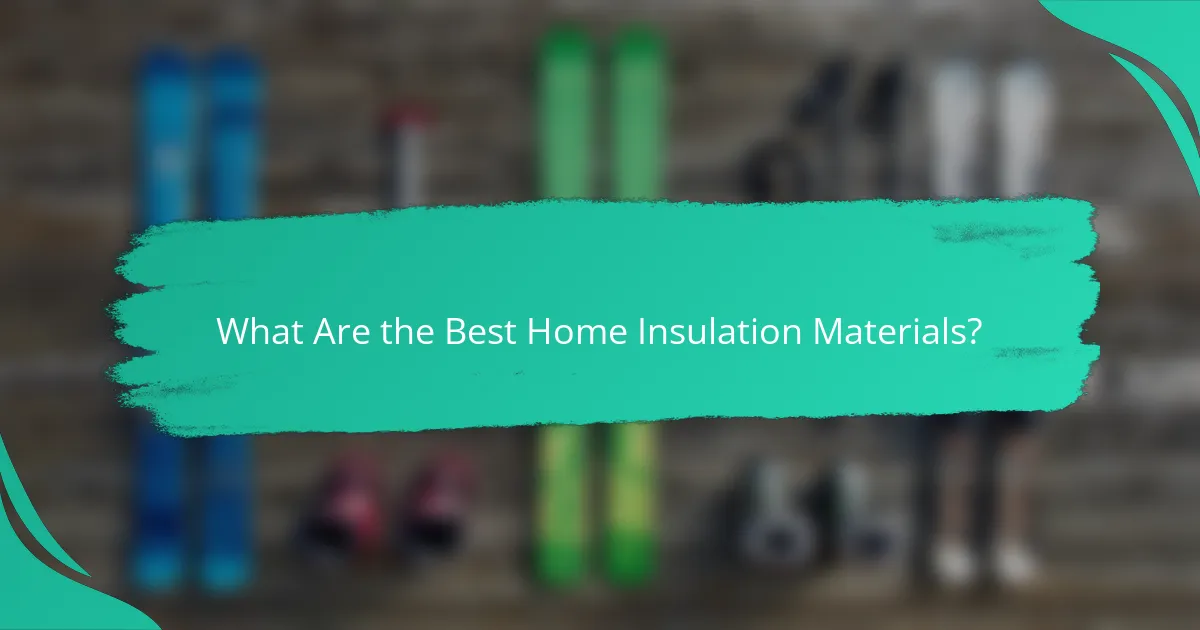
What Are the Best Home Insulation Materials?
The best home insulation materials vary based on effectiveness, cost, and installation methods. Common options include fiberglass, foam board, cellulose, mineral wool, and spray foam, each offering unique benefits and considerations for homeowners.
Fiberglass Insulation
Fiberglass insulation is one of the most widely used materials due to its affordability and effectiveness. It consists of tiny glass fibers that trap air, providing excellent thermal resistance.
When installing fiberglass, consider using batts or rolls for easy application in walls and attics. Ensure proper fitting to avoid gaps, which can reduce efficiency. Wear protective gear during installation to prevent skin irritation from the fibers.
Foam Board Insulation
Foam board insulation is a rigid panel made from polystyrene, polyisocyanurate, or polyurethane. It offers high insulating values in thinner profiles, making it ideal for tight spaces.
This type of insulation is often used in basements, exterior walls, and roofs. It’s crucial to seal joints with tape or spray foam to maximize its effectiveness. While it can be more expensive than fiberglass, its durability and moisture resistance can justify the cost.
Cellulose Insulation
Cellulose insulation is made from recycled paper products treated for fire resistance. It is an eco-friendly option that provides good thermal performance and soundproofing.
Typically installed via blowing into walls or attics, cellulose can settle over time, so it’s important to ensure adequate depth during installation. This material is often less expensive than foam board but may require more maintenance to prevent settling issues.
Mineral Wool Insulation
Mineral wool insulation, also known as rock wool, is made from natural or recycled materials. It is fire-resistant and provides excellent soundproofing, making it suitable for both thermal and acoustic insulation.
Installation can be done in batts or loose-fill forms. While it tends to be more expensive than fiberglass, its durability and resistance to moisture and pests can make it a worthwhile investment for certain applications.
Spray Foam Insulation
Spray foam insulation consists of a liquid that expands upon application, creating an airtight seal. It offers superior insulation values and is effective for filling gaps and cracks.
While spray foam can be more costly upfront, its energy efficiency can lead to significant savings on heating and cooling bills. Professional installation is recommended to ensure proper application and safety, as it requires specific equipment and expertise.
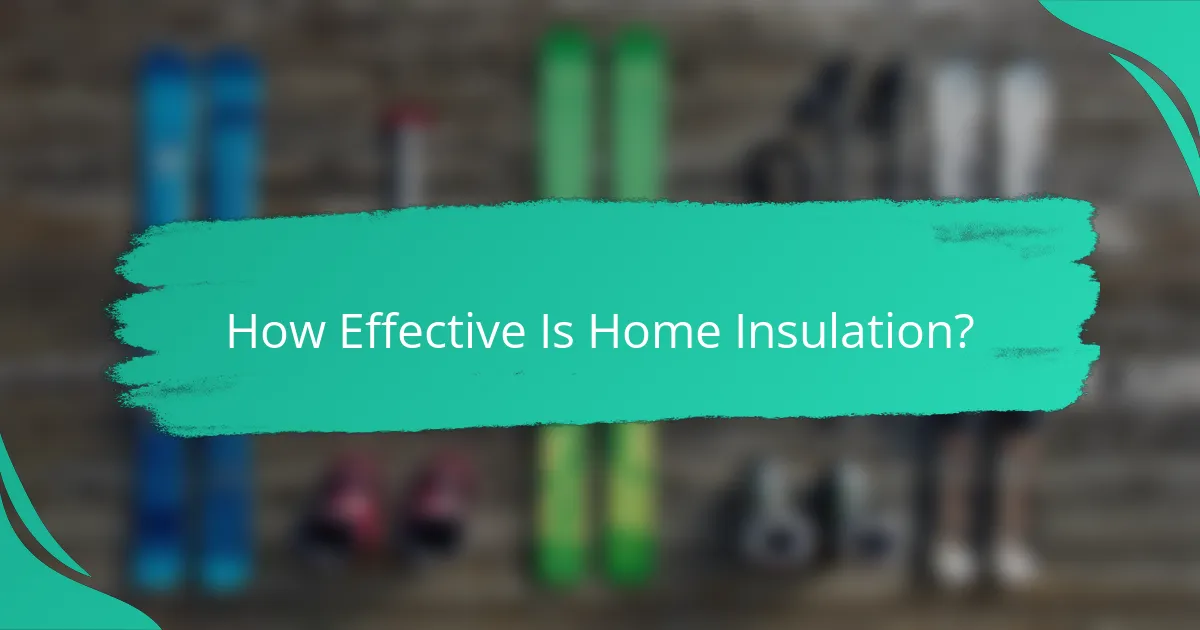
How Effective Is Home Insulation?
Home insulation is highly effective at reducing heat transfer, which leads to lower energy costs and improved comfort. Proper insulation can significantly enhance a home’s energy efficiency, making it a key factor in maintaining a stable indoor temperature throughout the year.
R-Value Explained
The R-value measures insulation’s resistance to heat flow; the higher the R-value, the better the insulation’s effectiveness. For instance, common insulation materials like fiberglass batts typically have R-values ranging from 11 to 38, depending on thickness and type.
When choosing insulation, consider the climate and the specific area of your home. For colder regions, higher R-values are recommended to prevent heat loss, while milder climates may require lower values. Always check local building codes for minimum R-value requirements.
Energy Savings Potential
Effective insulation can lead to substantial energy savings, often reducing heating and cooling costs by 20-50%. By minimizing the need for heating in winter and cooling in summer, homeowners can see a return on investment within a few years.
To maximize savings, ensure that insulation is installed correctly and that there are no gaps or compression. Regularly check for air leaks around windows and doors, as these can undermine insulation efforts and increase energy bills.
Impact on Comfort Levels
Proper insulation significantly enhances comfort levels by maintaining consistent indoor temperatures and reducing drafts. This is particularly important in extreme weather conditions, where inadequate insulation can lead to uncomfortable living spaces.
In addition to temperature control, good insulation also helps reduce noise transmission from outside, contributing to a quieter home environment. Consider using soundproofing insulation materials if noise reduction is a priority in your living space.
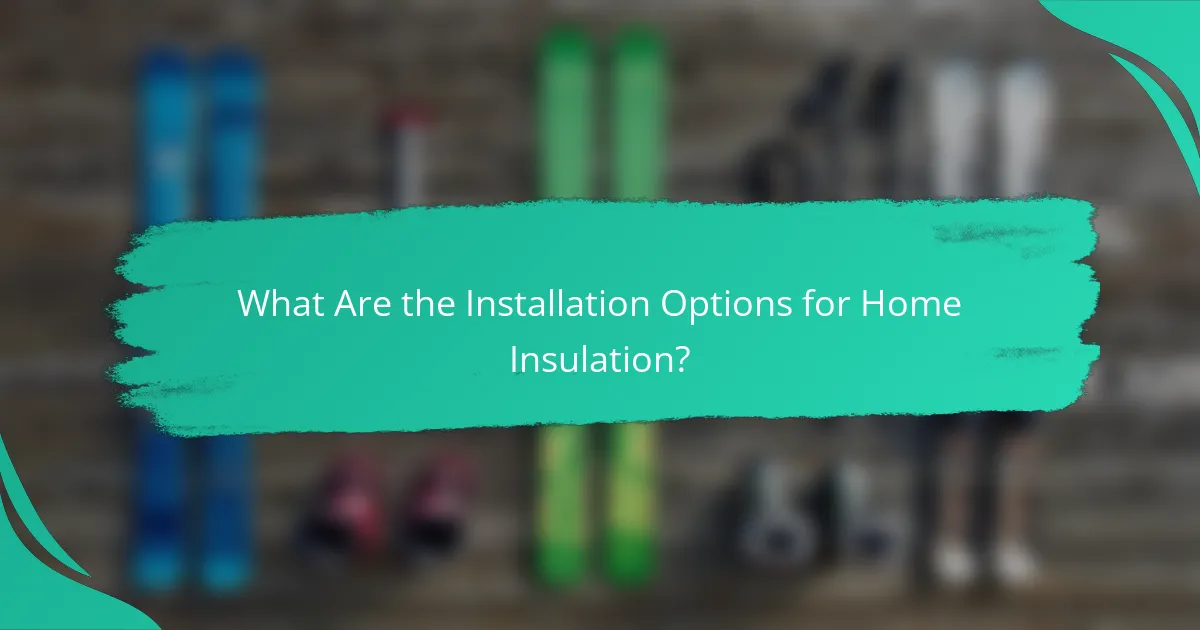
What Are the Installation Options for Home Insulation?
Home insulation can be installed through DIY methods or by hiring professional services. Each option has its own advantages and considerations, impacting both effectiveness and cost.
DIY Installation
DIY installation of home insulation can be a cost-effective option for homeowners willing to invest time and effort. Common materials for DIY projects include fiberglass batts, foam board, and spray foam kits. It’s essential to follow safety guidelines and local building codes to ensure proper installation.
Before starting, assess your home’s insulation needs and choose materials that suit your climate. Tools required typically include a utility knife, measuring tape, and safety gear. Proper sealing and ventilation are crucial to maximize insulation effectiveness.
Professional Installation Services
Hiring professional installation services can provide a higher level of expertise and efficiency. Professionals can assess your home’s specific needs, recommend suitable materials, and ensure compliance with local regulations. This option often results in better insulation performance and longevity.
While the upfront cost is higher compared to DIY, professionals may offer warranties and guarantees on their work. It’s advisable to obtain multiple quotes and check reviews to find reputable contractors in your area.
Cost Comparison of Installation Methods
The cost of DIY insulation typically ranges from low hundreds to low thousands of USD, depending on materials and the size of the area. In contrast, professional installation can range from high hundreds to several thousand USD, influenced by the complexity of the job and the materials used.
When considering costs, factor in potential long-term savings on energy bills due to improved insulation. Weigh the initial investment against the benefits of professional expertise and warranty coverage to make an informed decision.
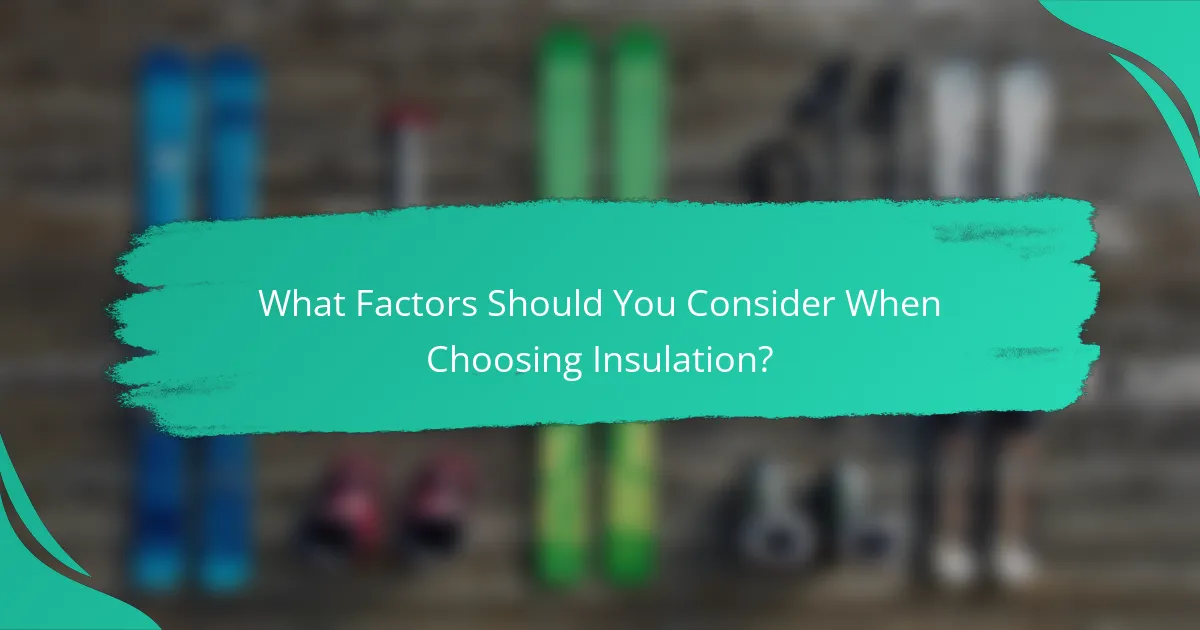
What Factors Should You Consider When Choosing Insulation?
When selecting insulation, consider climate, home design, and budget. These factors significantly influence the effectiveness, installation process, and overall cost of insulation materials.
Climate Considerations
Your local climate plays a crucial role in determining the best insulation type. In colder regions, materials with higher R-values, such as spray foam or fiberglass, are preferable for retaining heat. Conversely, in warmer climates, reflective insulation or radiant barriers can help keep homes cool.
Additionally, consider moisture levels in your area. In humid climates, materials like cellulose may be less effective due to their tendency to absorb moisture, leading to mold growth. Opt for moisture-resistant options in such environments.
Home Design and Structure
The design and structure of your home dictate the insulation approach. For example, attics, walls, and basements require different insulation strategies. Ensure that the insulation fits well within the existing framework to maximize efficiency.
Older homes may have unique challenges, such as irregular spaces or outdated building materials. In these cases, custom solutions like blown-in insulation can fill gaps effectively. Always assess the structure before making a decision.
Budget Constraints
Your budget will significantly influence your insulation choices. While high-performance materials may have a higher upfront cost, they often lead to long-term savings on energy bills. Aim for a balance between initial investment and future savings.
Consider the total cost of installation, including labor. DIY options can reduce expenses but may require more time and expertise. Always compare the long-term benefits of different materials against their initial costs to make an informed decision.

What Are the Benefits of Proper Home Insulation?
Proper home insulation significantly enhances energy efficiency, reduces utility bills, and improves overall comfort. By minimizing heat transfer, insulation helps maintain a consistent indoor temperature, making homes more livable year-round.
Energy Efficiency
Energy efficiency is one of the primary benefits of effective home insulation. Insulation materials, such as fiberglass, foam board, and cellulose, work by slowing down the transfer of heat, keeping warm air inside during winter and outside during summer. This can lead to a reduction in heating and cooling costs by as much as 20-30%.
When selecting insulation, consider the R-value, which measures thermal resistance. Higher R-values indicate better insulating properties. For instance, in colder climates, aim for insulation with an R-value of 30 or higher in attics, while moderate climates may require R-values around 20-25.
To maximize energy efficiency, ensure that insulation is properly installed without gaps or compression. Common pitfalls include neglecting areas like attics, basements, and crawl spaces. Regularly check for any signs of wear or damage to maintain optimal performance.
